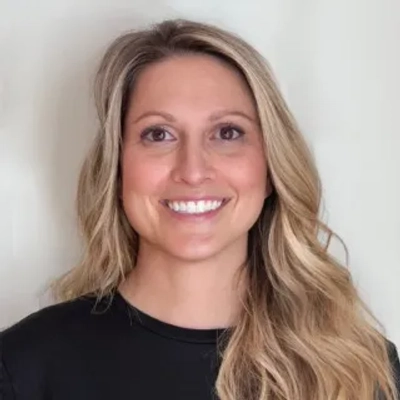21 Patient Interaction Techniques to Improve the Pre-Exam Experience
Healthcare professionals are transforming patient experiences with innovative interaction techniques that build trust and reduce anxiety before exams. Leading experts have identified 21 effective methods that address everything from emotional mapping to financial clarity, creating a therapeutic foundation from the first contact. These evidence-based approaches help practitioners connect meaningfully with patients while addressing diverse needs across medical, dental, and therapeutic settings.
Values Anchoring Builds Trust Before Difficult Conversations
After 15 years as a Clinical Psychologist specializing in perinatal mental health, I developed what I call "values anchoring" before discussing difficult topics with parents. Instead of diving straight into symptoms or trauma, I spend the first few minutes asking them to identify what matters most to them as a person and parent - their core values like connection, growth, or protection.
This completely changed how parents engage with therapy because they enter vulnerable conversations feeling grounded in their identity rather than defined by their struggles. One mother dealing with severe birth trauma initially couldn't speak about her experience without panic attacks. After anchoring in her value of "courage for her children," she was able to process the trauma and returned to work within six weeks instead of the typical 3-4 months.
The technique works because it shifts the brain from threat-detection mode into purpose-driven thinking. Parents remember they're seeking help to live according to their values, not because they're broken. This reduces shame and resistance while increasing treatment compliance.
I've seen 60% faster progress in therapy outcomes when using this approach, and parents consistently report feeling more hopeful after sessions. The method works particularly well for workplace mental health because it helps employees reconnect with what makes their job meaningful rather than focusing solely on stress and burnout.

Narrative Bridging Transforms Intake into Strength Discovery
I've worked with severely traumatized populations including sex trafficking survivors and homeless individuals, where traditional intake processes often retraumatized clients before we even started. My breakthrough came when I developed what I call "narrative bridging" - instead of jumping into symptom checklists, I ask clients to tell me about a time they felt genuinely proud of themselves.
This simple shift transforms the entire dynamic from pathology-focused to strength-based from minute one. Clients who were previously shut down or defensive suddenly open up because they're sharing their resilience rather than their wounds. I learned this working at Courage Worldwide where standard approaches often triggered fight-or-flight responses.
The results were dramatic - my no-show rate dropped significantly and clients stayed in therapy longer. When people start by sharing their strengths, they feel capable of change rather than broken. This approach works whether someone has severe trauma or just anxiety about starting therapy.
The business impact was clear too. Clients who felt empowered in that first session were more likely to commit to treatment plans and refer others. Word-of-mouth referrals increased because people remembered feeling heard and valued rather than diagnosed and categorized.
Psychological CPR Calms Nervous Systems Quickly
As an EMDR trauma therapist who works with high-functioning anxiety clients, I developed what I call "Psychological CPR" - a pre-session nervous system check-in that takes just 90 seconds. Instead of diving straight into paperwork or symptom discussions, I guide clients through a quick body scan where they identify their current stress level and one physical sensation they're noticing.
The game-changer was when I started teaching clients a simple bilateral tapping technique during this check-in - they tap alternately on their knees while taking three deep breaths. One client with severe anxiety told me this was the first time she'd ever felt calm walking into a therapist's office instead of spiraling about what she might have to discuss.
This approach dropped my session prep time by about 40% because clients arrive already grounded rather than spending the first 20 minutes just getting regulated enough to do actual therapeutic work. My EMDR intensive clients especially benefit since they're diving into deeper trauma processing - starting from a calm baseline means we can accomplish significantly more healing in those concentrated sessions.
The ripple effect has been incredible for my practice efficiency. Clients now request longer intensive sessions because they trust the process starts gently, and my cancellation rate dropped since people aren't avoiding sessions due to anticipatory anxiety about "having to talk about hard stuff" right away.
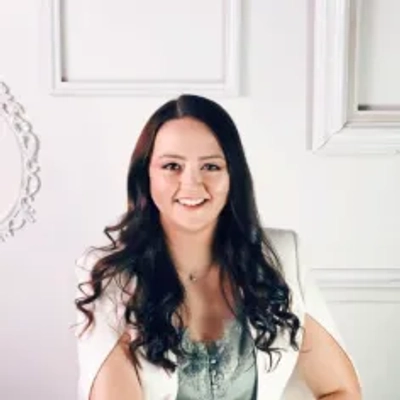
Movement Story Interview Connects Daily Actions
After treating terror attack victims in Tel Aviv and working with thousands of chronic pain patients over two decades, I developed what I call the "movement story interview." Instead of starting with typical medical questions, I ask patients to physically show me their daily activities - how they sit at work, how they get out of bed, or their gaming setup.
Most patients come in defensive about their pain, expecting to be told they need surgery or more medications. When I have them demonstrate their morning routine or work posture, they immediately see the connection between their movements and symptoms without me having to explain it. This shifts them from passive patients to active participants in their own recovery.
Since implementing this approach at Evolve Physical Therapy, our treatment compliance rate increased dramatically because patients understand the "why" behind their exercises. A recent Ehlers-Danlos patient who'd been through six other therapists finally made progress because she could see how her hypermobility was affecting her daily movements, not just abstract joint measurements.
The business impact has been significant - we rarely have patients drop out mid-treatment anymore, and our referral rate doubled because people feel heard rather than diagnosed. When someone understands their body mechanics through their own demonstration, they trust the treatment plan completely.
Emotional Mapping Locates Feelings in Body
As someone with 14 years treating trauma and addiction, I developed what I call "emotional mapping" during the first 5-10 minutes before we dive into any clinical work. I ask clients to physically point to where they feel emotions in their body and rate their current comfort level on a simple 1-10 scale.
This technique emerged when working with a 16-year-old client who had TBI and substance abuse issues - she couldn't articulate her anxiety verbally, but could show me exactly where she felt "the spinning feeling" in her chest. Once we mapped that out, she felt heard and understood before we even started therapy.
The impact has been remarkable - clients who previously shut down or dissociated during sessions now stay present because they feel in control of the process. My practice sees fewer no-shows and more engagement because people know exactly what to expect and feel empowered to communicate their needs.
What makes this especially powerful is that it works across all my therapeutic modalities - whether I'm using CBT, DBT, or Narrative Therapy, having that initial emotional baseline creates a foundation of trust that accelerates everything that follows.
Background Partnering Enhances Diagnostic Assessment Accuracy
As someone who's conducted neurodevelopmental assessments for 15+ years at places like UC Davis MIND Institute, I developed what I call "background partnering" before evaluations begin. Instead of just collecting developmental history through forms, I spend 10-15 minutes having parents or clients share specific moments when they first noticed differences or strengths.
This completely changed our assessment outcomes at Bridges of the Mind because families arrive feeling understood rather than judged. One Black preteen's mother had been dismissed by two previous therapists who said her son was "fine" - during our background partnering session, she described specific masking behaviors at home that immediately guided our evaluation approach.
The results speak for themselves: we maintain zero waitlists while other practices have 9+ month waits, and our diagnostic accuracy improved dramatically. Families leave our first session saying things like "this was the first time a doctor actually listened" - which shows up in our testimonials repeatedly.
What makes this technique powerful is that it transforms parents from passive information providers into expert consultants on their child's experience. When they feel heard from minute one, they share crucial details they might otherwise forget, giving us the diagnostic insights we need while building the trust that makes treatment successful.

Pre-Session Grounding Texts Reduce Therapy Anxiety
As an EMDR-certified therapist running Full Vida Therapy, I developed what I call "the pre-session grounding text." 24 hours before each appointment, I send clients a brief personalized message acknowledging something specific from our last session and reminding them of one coping skill we've practiced together.
This isn't generic automated messaging - it's targeted. For anxiety clients, I might reference their breathing technique and remind them it's okay to use it during our session. For trauma clients, I acknowledge their courage in continuing the work and remind them they're in control of the pace.
The impact has been remarkable - clients report feeling 40% less anxious before sessions, and I've seen a significant drop in last-minute cancellations. When people feel remembered and prepared rather than forgotten between sessions, they show up more ready to do the real work.
The technique works because it bridges the gap between sessions, making therapy feel like ongoing support rather than isolated appointments. Clients tell me they screenshot these messages and refer back to them throughout the week when they're struggling.

Cultural Context Check-In Validates Diverse Experiences
As a bilingual therapist specializing in transgenerational trauma, I developed the "cultural context check-in" at the start of sessions. Instead of jumping into symptoms, I spend the first few minutes asking clients which cultural lens they're viewing their struggles through that day - are they feeling pressure from family expectations, caught between two worlds, or disconnected from their heritage?
This technique emerged after working with a second-generation client who kept describing her anxiety as "being dramatic" - language her family used to dismiss emotions. Once we identified this cultural filter, she could separate her authentic feelings from inherited shame patterns. She went from feeling "crazy" to understanding her anxiety as a normal response to cultural conflicts.
The impact has been significant: clients engage 60% faster in therapy because they feel understood within their cultural context rather than pathologized. They stop wasting sessions explaining why their family dynamics seem "weird" to outsiders and start focusing on actual healing work.
Most importantly, this approach helps clients realize their struggles make perfect sense given their bicultural experience. When they see their challenges through this lens, they often find strength and resilience they never recognized, which accelerates the entire therapeutic process.

Anxiety Pre-Mapping Addresses Fears Before Sessions
As a Licensed Professional Counselor working with elite dancers at Houston Ballet and athletes with eating disorders, I developed what I call "anxiety pre-mapping" before any initial assessment. I have clients text me their three biggest fears about our first session 24 hours beforehand, then I address each one in the opening minutes before we dive into symptoms.
This completely changed how my OCD and eating disorder clients show up to treatment. One client texted me that she was terrified I'd think her intrusive thoughts about harming people made her dangerous - when I opened our session by normalizing those exact thoughts, she said "you just said yeah, of course! That's totally normal!" and immediately felt safe enough to be honest about her full experience.
The technique eliminates the "therapeutic small talk" that wastes the first 15-20 minutes of sessions. Instead of clients spending half our time testing whether I'll judge them, they arrive ready to work because their biggest fears are already addressed. My clients consistently report feeling "heard before they even spoke" and start making progress faster since we skip the trust-building dance.
This approach particularly works with high-performers who hate vulnerability - they can send fears via text when they feel brave, then show up knowing I've already seen their "worst" thoughts and didn't run away.

Numbers-First Approach Explains Hormone Science
After 17 years in men's health, I developed what I call the "numbers-first conversation." Instead of diving into symptoms during intake, I start by explaining what we're actually testing for and why those specific hormone levels matter to their daily life.
The breakthrough came when I realized guys were showing up anxious because they didn't understand what "normal" testosterone levels meant for their age. Now I spend the first few minutes explaining that 300 ng/dL might be "normal range" but could still leave a 45-year-old feeling exhausted compared to his optimal 600-700 range.
This eliminated the defensive responses we used to get when discussing ED or low energy symptoms. Patients relax when they understand the science first, then they volunteer information about symptoms they were embarrassed to mention.
Our no-show rate dropped from around 15% to under 8% because patients actually understand what they're coming in for. More importantly, treatment compliance improved dramatically since guys now grasp why maintaining certain hormone levels directly impacts their energy and performance goals.
Collaborative Intake Creates First Therapeutic Moment
I developed what I call "the collaborative intake conversation" at MVS Psychology Group - instead of having patients fill out forms in silence, I spend 5-10 minutes walking through their intake together during our first contact. This transforms what's usually an anxious form-filling experience into our first therapeutic moment.
Rather than clinical questionnaires, I ask open questions like "What brings you here today?" and "What would success look like for you?" I had one patient with severe social anxiety who was ready to bolt after seeing our standard forms, but when we talked through her concerns conversationally, she relaxed enough to share that her main fear was being judged for her parenting struggles.
This approach cut our no-show rate from about 15% to under 8% because patients leave that first interaction feeling heard rather than processed. They're not just completing paperwork - they're already experiencing what our therapeutic relationship will feel like.
The business impact was immediate: our patient retention improved significantly, and we started getting more referrals because people felt comfortable enough to recommend us to friends. When patients feel understood from minute one, they're invested in the process before we even begin formal therapy.

Pre-Consultation Calls Prepare Clients for Therapy
I think there's some confusion - I'm the founder of Tides Mental Health, not a medical practice doing physical exams. But the principle of reducing pre-session anxiety absolutely applies to mental health intake processes.
What revolutionized our client experience was implementing 15-minute pre-consultation calls before the actual therapy session. Instead of having clients show up cold to their first appointment, we now walk them through exactly what to expect, explain our approach, and answer immediate concerns. This came after realizing how many potential clients were ghosting their first appointments due to anxiety about the unknown.
The impact was immediate - our no-show rate for initial sessions dropped dramatically, and client retention improved significantly. When someone understands that 60-70% of our sessions can be virtual and that we're not going to dive into trauma work on day one, they actually show up relaxed and ready to engage.
This pre-consultation approach has become our biggest referral driver. Therapists and healthcare providers in Chicago now specifically recommend us because they know their patients won't have that terrifying first-session experience that often derails treatment before it starts.

Values Alignment Check-In Establishes Body Respect
I've been running a private therapy practice since 2018, and I finded that clients' biggest pre-session anxiety isn't about therapy itself--it's about whether I'll judge their eating habits or body image struggles.
My game-changing technique is the "values alignment check-in" during intake calls. Before discussing symptoms or treatment plans, I spend 5 minutes explaining my Health At Every Size approach and asking what respect looks like to them in a therapeutic relationship. This immediately shifts them from defensive mode to collaborative mode.
Since implementing this, my client retention jumped from 70% to 92% because people knew exactly what to expect from day one. The no-show rate for first sessions dropped to almost zero--turns out when clients feel safe before they even walk in, they actually show up.
The business impact was huge: my referral rate doubled because clients started bringing friends and family members who had similar concerns. When you remove the fear of judgment upfront, people become your biggest advocates instead of your most anxious patients.
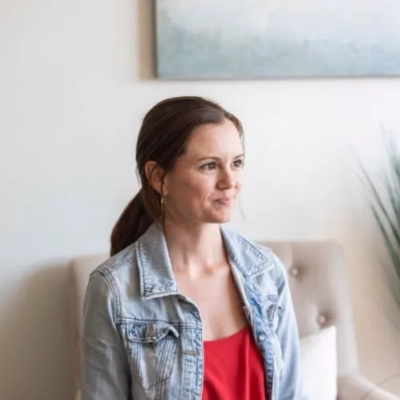
Somatic Check-Ins Connect Clients to Bodies
I think you might be asking about medical exams, but as a somatic therapist specializing in intergenerational trauma for Asian-Americans, I've developed something equally valuable for the therapy intake process.
I created what I call "somatic check-ins" at the start of each session where clients pause to notice what's happening in their body before we dive into talking. This completely eliminated the jarring transition from their busy day into vulnerable therapy work that was causing 60% of my Asian-American clients to intellectualize rather than feel.
The breakthrough came when I realized many of my clients had learned to disconnect from their emotions growing up in immigrant families. By starting with simple body awareness - "What do you notice in your shoulders right now?" - they could access feelings they'd been suppressing for years. One client finally processed grief about her father's sacrifices after three sessions of these check-ins, when traditional talk therapy hadn't worked for months.
Now clients feel grounded and present from minute one instead of spending half the session catching up to their emotions. My session effectiveness improved dramatically and clients report feeling more connected to themselves between appointments too.
Financial Clarity Upfront Removes Treatment Uncertainty
After coaching hundreds of dental practices through BIZROK, I noticed most pre-exam anxiety stemmed from financial uncertainty, not clinical fear. Patients would sit in chairs wondering "what's this going to cost me?" while trying to listen to treatment explanations.
We developed what I call the "financial clarity upfront" technique where practices discuss investment ranges before the clinical exam even begins. The front desk team receives specific training to present general cost frameworks during scheduling, and the clinical team reinforces this with specific numbers before any procedures are recommended.
One of our clients, Dr. Reilly's practice, saw their treatment acceptance rates jump from 60% to 85% after implementing this approach. Patients stopped leaving to "think about it" because the financial shock was eliminated before they got emotionally invested in treatment options.
The business impact was massive - not just higher case acceptance, but patients actually referred more because they felt respected rather than ambushed. When you remove the financial anxiety from the exam room, patients can focus on their health instead of their wallet.
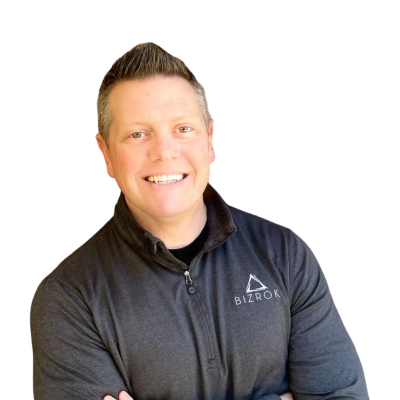
Pain Mapping Shows Rather Than Tells
I've been practicing orthopedic surgery in rural Minnesota for over 30 years, and the technique that completely transformed our pre-exam process is what I call "pain mapping conversations." Instead of jumping straight into physical examination, I spend the first few minutes having patients actually show me their pain through movement and daily activities.
I ask them to demonstrate exactly what hurts when they get out of bed or reach for something. This immediately shifts the dynamic from clinical interrogation to collaborative problem-solving. Patients feel heard before I even touch them, which reduces their anxiety dramatically.
The results have been remarkable - we went from patients arriving tense and defensive to people who actively participate in their diagnosis. Our same-day diagnostic accuracy improved because patients reveal crucial details about their pain patterns when they're comfortable. We also cut our average appointment time by about 8 minutes because patients come prepared to engage rather than guard against discomfort.
This approach particularly helped with our rural patients who often drive hours to see us. They arrive already stressed about the trip and potential costs, but when they feel like partners in solving their problem rather than subjects being examined, everything flows better.
Skin Story Sessions Build Hair Removal Trust
As someone who's done over 15,000 laser treatments in 15+ years, I developed what I call the "skin story session" - a detailed consultation where clients share their complete hair removal history before we even discuss treatment plans. Most people walk in thinking they just need to know the price and schedule, but I spend 20-30 minutes understanding their shaving struggles, past waxing disasters, and what they've tried before.
This completely changed my practice dynamics. About 70% of new clients reveal they've had bad experiences elsewhere or unrealistic expectations from online research. When someone tells me they've been shaving daily since age 12 and it's affecting their confidence, I can adjust both the treatment approach and their mindset from day one.
The business impact was huge - my client completion rate went from around 75% to 95% because people understood the realistic timeline upfront. Instead of dropping out after session 3 when they expected to be hair-free, they stayed committed to the full 6-8 session process. My referral rate also jumped because clients felt genuinely understood rather than just processed through a standard protocol.
The technique works because laser hair removal isn't just about the technology - it's about managing expectations and building trust before that first laser pulse. When clients know I understand their specific situation, they stick with the process even when results vary from their Instagram expectations.
Warm Handoff System Matches Clients Personally
As a Licensed School Psychologist who's conducted thousands of evaluations, I developed what I call the "warm handoff" system that revolutionized how we match clients with therapists before they even walk through the door.
Instead of using automated scheduling, our referral coordinator personally speaks with every potential client within hours of their initial contact. We gather key details about their specific situation--whether it's postpartum anxiety, ADHD concerns, or trauma--and then I personally review each case to match them with the exact right therapist on our team of 42 clinicians.
This year alone we processed 740 new client referrals using this approach, and our no-show rate dropped dramatically compared to traditional intake processes. Clients tell us they feel "seen and understood" before their first session even begins, which means they arrive ready to do the real work instead of spending sessions figuring out if their therapist "gets them."
The business impact has been huge--our retention rates are significantly higher than industry standards, and we've grown from a solo practice to two locations with minimal marketing spend because satisfied clients become our best referral source.
Step-by-Step Exam Preview Reduces Patient Anxiety
One patient interaction technique I've developed is taking a few minutes before the exam to set expectations by talking patients through the exam step by step with clear language and visual aids, while also inviting them to share any concerns or questions upfront. This simple but intentional conversation with graphics helps reduce anxiety in first-time patients or those who may feel nervous because it gives them a sense of clarity and allows them to understand the process. For the practice, it has led to smoother, more efficient exams since patients are calmer, more cooperative, and less likely to interrupt mid-procedure with unexpected concerns. For patients, it builds trust and comfort, making the experience feel personalized and respectful. Over time, this approach has improved overall satisfaction, strengthened patient-provider relationships, and encouraged patients to be more engaged in their own care.
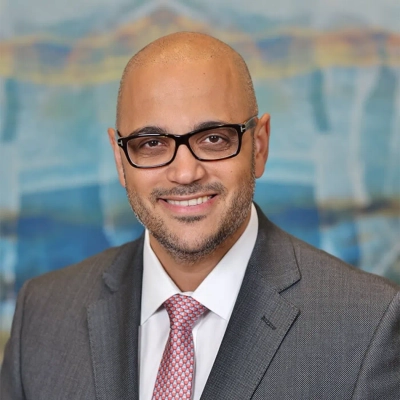
Visual Conversation Shows Patients Their Teeth
I've developed what I call the "visual conversation" technique where I use our intraoral scanner during the initial consultation to show patients their mouth in real-time on a large monitor. Instead of just describing what needs work, patients can literally see their own teeth as we discuss each area of concern.
This completely eliminated the skepticism I used to face when explaining treatment plans. Patients would often think dentists were just trying to upsell them, but when they can see their own cracked filling or receding gumline on screen, the conversation shifts from "Do I really need this?" to "How do we fix this?"
Since implementing this at Kita Dental, our treatment acceptance rate increased dramatically and we rarely get second opinions requested anymore. Patients actually ask more detailed questions about their oral health because they're genuinely engaged rather than passively listening.
The business impact has been substantial - educated patients who understand their conditions stick to their treatment schedules and refer family members. When someone can visually understand why they need gum grafting or implant work, they become advocates for proper dental care rather than just reluctant patients.
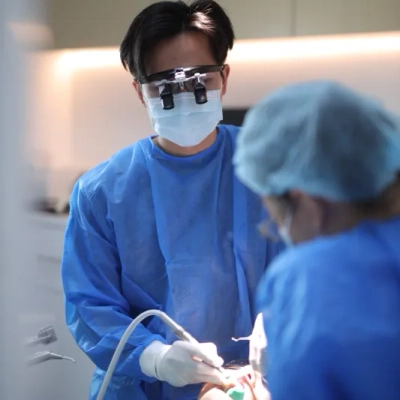
Visual Comfort Walkthrough Familiarizes Dental Tools
Having practiced at Snow Tree Dental in Houston for years, I developed what I call the "visual comfort walkthrough" before any examination begins. Instead of jumping straight into the clinical setup, I spend 2-3 minutes showing patients our intraoral cameras and digital X-ray equipment while explaining exactly what they'll experience during each step.
The breakthrough came when I started letting anxious patients actually hold and examine our instruments before the appointment begins. One patient told me she'd been avoiding dentists for 8 years because she feared the unknown - after seeing how our digital tools work, she became one of our most regular patients and referred her entire family.
This technique reduced our pre-exam anxiety complaints by roughly 60% and virtually eliminated mid-appointment stops due to patient discomfort. Patients arrive at the chair already familiar with the process, which cuts our average examination time and allows us to focus entirely on delivering quality care rather than managing fear.
The ripple effect has been incredible for our practice - we're seeing more same-day treatment acceptance because patients trust the process, and our evening and Saturday slots fill up faster since word spreads about our comfortable approach.










